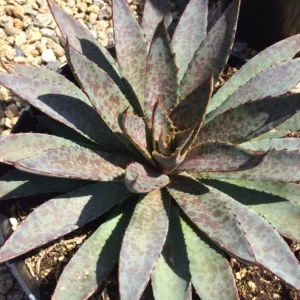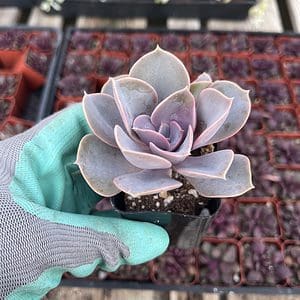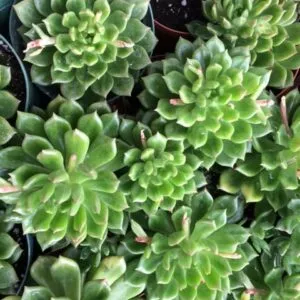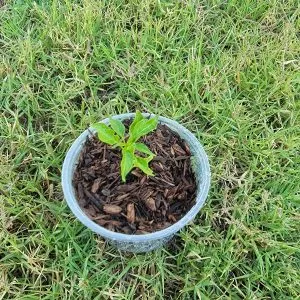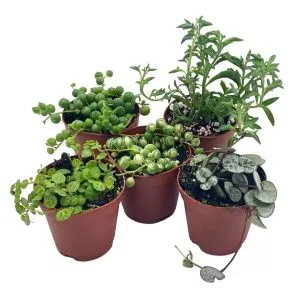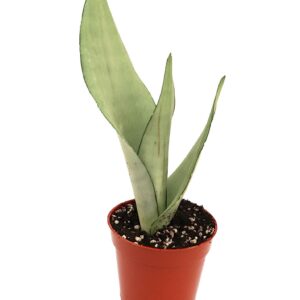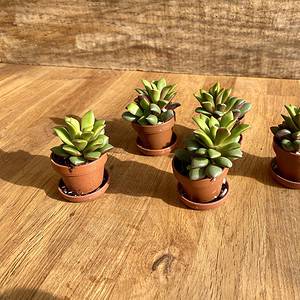No products in the cart.
Table of Contents
Our previous articles looked at how to care for air plants. But today, we want to share detailed information on Tillandsia ionantha care. The sky plant looks spectacular and is easy to care for, making it a great addition to your air plant collection.
So, stay a while longer, as you can find out how to get your hands on these houseplants later.
More About Air Plants
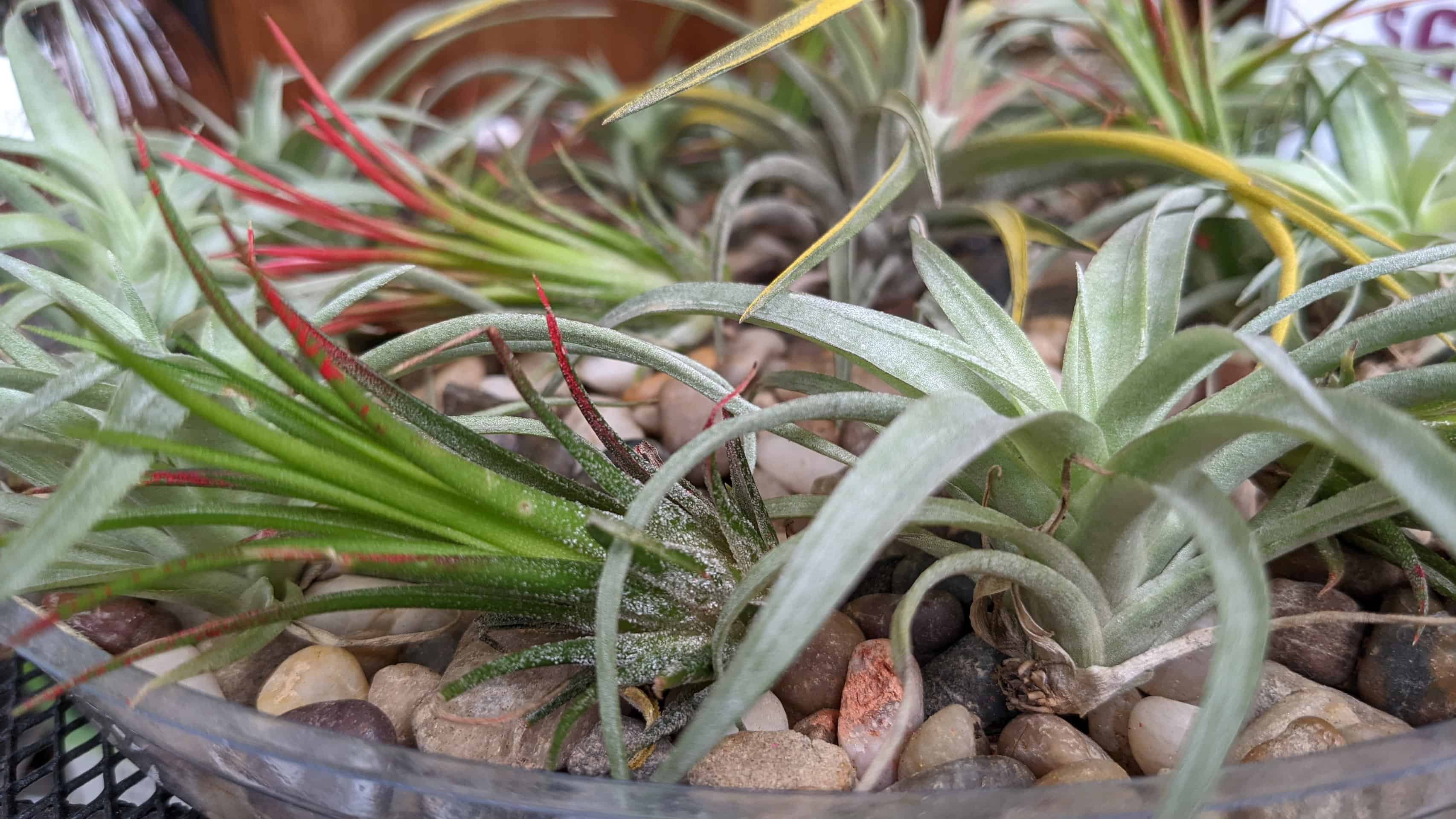
Tillandsia ionantha is a unique-looking plant with lanceolated green with deeper shade leaves in deep pink or reddish hues. Many plant lovers refer to it as the blushing bride air plant or sky plant.
This air plant is beautiful as it starts as a small plant with clusters of green-gray foliage forming a circular shape. The leaves extend from the base as it matures while the colors intensify with the shape.
The Tillandsia ionantha plants grow best in the USA hardiness zones 9-11. The blushing bride air plants are part of the Tillandsia genus belonging to the Bromeliaceae family. It grows in Central America, Costa Rica, and South America.
The Tillandsia ionantha was first described by Jules E Planchon in 1854 to 1855 as the blushing bride that displays white flowers during summer. Yet, the vibrant colors stand out most for air plant enthusiasts.
This air plant has small roots anchoring to other outdoor plants like tree branches, rocks, and stones. Thus, when it comes to Tillandsia plants at home, it helps to create a similar environment for them to grow.
A mature plant can grow up to 12 inches tall and 4 inches wide indoors and grows mainly in spring and summer.
Take Care of Tillandsia Ionantha Plant

When it comes to Tillandsia care, the plant species is a hardy air plant that does well with a regular misting spray, good air circulation, and sunlight. Another benefit is that your plant thrives without soil and is nearly pest-free.
Tillandsia Ionantha Common Needs
As the name suggests, air plants grow in their native habitat without any potting medium. Hence, it grows on good-quality air on branches, rocks, or stones. So, the best is to provide your plant with good air circulation in glass globes, in terrariums, on wood bark, or directly on windowsills or countertops.
The Lighting Needs Indirect Sunlight

Growing Tillandsia ionantha is easily done on all types of depressions. Please attach it to wood with florist wire, or you can tuck it in a crevice or glue it to some substrate. Still, do not use any treated lumber containing salt or other substances that can harm your plant.
Another notable thing about plant care for your sky plant is that it is a sun-loving plant. So, you can place your air plants in an east or west-facing window for enough bright indirect light.
We do not recommend placing your Tillandsia varieties in a south-facing window as it might receive too much direct sun exposure resulting in scorched foliage with brown spots or dried patches.
Still, if you do not have a spot inside the home with enough light, it helps to provide them with a full spectrum of artificial light to grow healthy. With up to two hours of direct sunlight, it helps encourage flowering.
Watering Your Air Plant
Tillandsia ionantha thrive on little watering, but if you want your young plants to remain healthy to mature, a regular watering regime helps. So, it depends on the environment regarding care and how to water air plants.
You can use a spray bottle with water to give it a mist regularly, three times a week. Then it helps to shake your air plant dry as the excess water can cause rot. While the Tillandsia ionantha air plant does take moisture from the air, it will not be enough in a home setting.
Still, be wary of overwatering as it can cause root damage, and the leaves turn black falling off. So, water with caution as a little goes a long way. You can also do an occasional soaking once a month.
The best method is to submerge your air plant into room temperature water for up to an hour. Then remove your sky plant and dry it out well to prevent rotting. So, you can leave it lying ins some direct sunlight for a while.
If you decide to use tap water, we recommend leaving it standing for up to 24 hours for the chemicals to evaporate.
Humidity Levels and Temperature Tillandsia
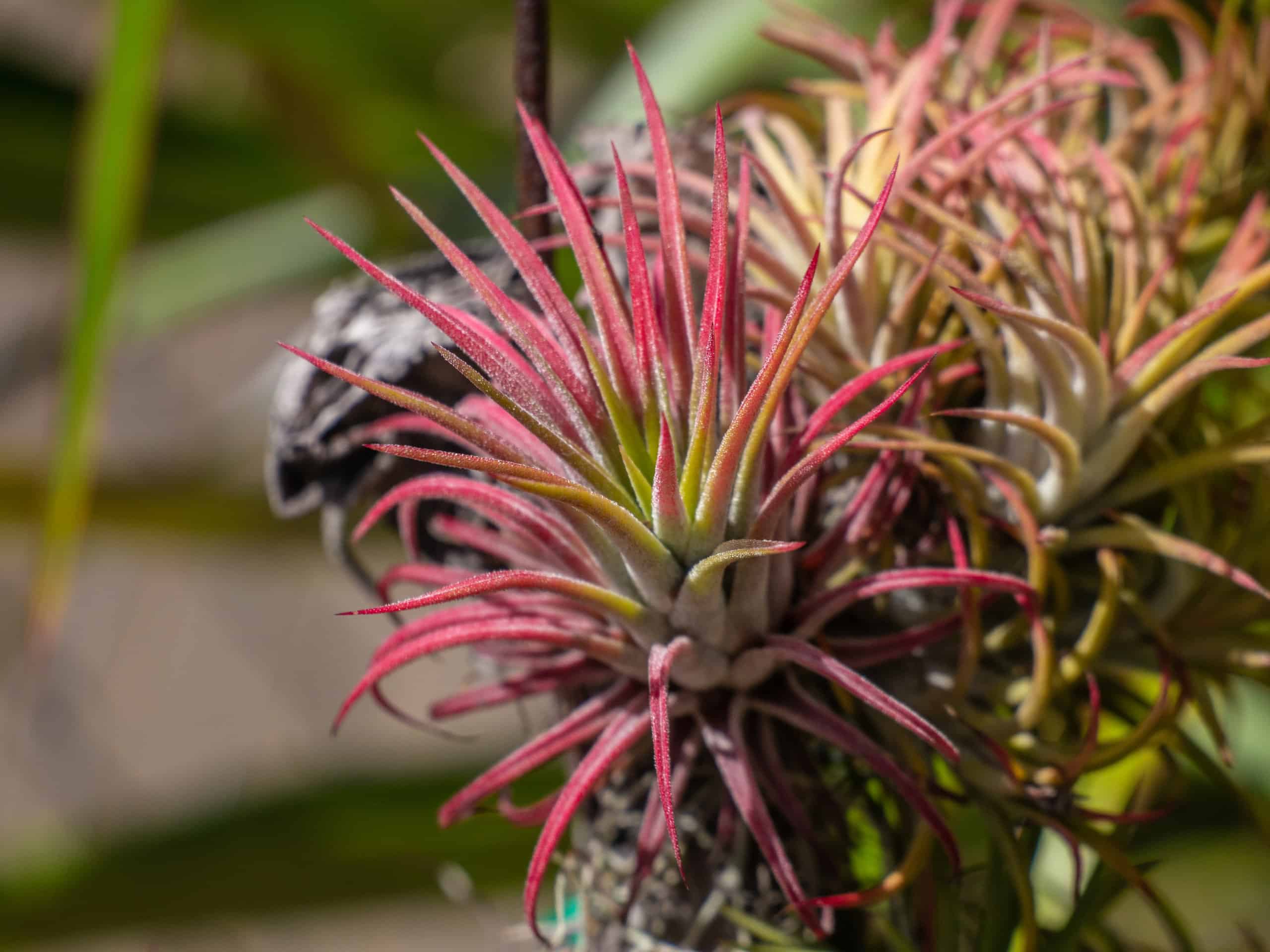
The ideal temperature for your Ionantha air plants ranges from 60 – 80 degrees Fahrenheit. You find these temperatures consistent in most households. But we recommend keeping an eye on your plant in cooler temperatures and relocating them if struggling.
The same applies to warmer temperatures, and also best to bring them indoors for overwintering. The humidity level is 60% to 72%, but it will be lower in the home. Hence, it helps to give your indoor plants a light mist or keep them in the bathroom with ample air circulation.
Still, if you live in high-humidity climates that are too high, the trichomes in the leaves extract moisture from the air, and watering needs consideration. So, you will need to water less.
Use a Foliar Fertilizer
While you need not feed your Tillandsia ionantha, it helps provide them with good health, encourages blooms, and readily sprouts offshoots. Furthermore, it will bring out the striking purple-toned shoots as the plant matures.
Hence, it helps to use a Bromeliad 17-8-22 for feeding and ensure it is not urea-based, as your sky plant does not grow in a peat mix and only uses a little.
Propagation of Sky Plants
The air plant you can propagate through the pups attached or seeds. The quickest method is the pups and the easiest. Using seeds takes a long time, and you will only see a mature plant in about eight years.
After the first bloom cycle, you will see offshoots growing at the base of the parent plant. You can use a sharp knife to harvest a few pups by cutting them away from the mother plant. You can then place your new plant in a location and care for it as you would for your parent plant.
Only 1 left in stock In stock (can be backordered) In stock In stock
$65.99
Sold By:
Succulent Oasis
Succulent Plant Mangave Bloodspot
Rated 4.84 out of 5 based on 352 customer ratings02
Sold By:
Succulent Oasis
Free Shipping
$15.99
Sold By:
Gar-Zen Botanical Design
Rare Tradescantia Bunny Bellies Ship Free.
Only 8 available and it’s in 1 people’s basket Rated 4.86 out of 5 based on 49 customer ratings00
Sold By:
Gar-Zen Botanical Design
$4.50
Sold By:
Cacti and Exotica
Echeveria—Perle von Nurnberg
Rated 4.98 out of 5 based on 59 customer ratings00
Sold By:
Cacti and Exotica
$9.99
Sold By:
Succulent Oasis
Medium Succulent Plant – Echeveria Sleepy Rich Green Rosette
Rated 4.84 out of 5 based on 352 customer ratings02
Sold By:
Succulent Oasis
seed propagation
If you choose to use seed, it helps to wait until your Tillandsia ionantha flowers, and once the flower dies after the blooming and develops seed pods, it opens up with tiny brown seeds.
You can remove the tail when collecting seeds using tweezers and place them in a water container to soak. Within a few weeks, you notice green flecks appearing and ready to transfer to moist peat moss until the plant’s roots develop.
Sky Plant Varieties
When it comes to Tillandsia varieties, you can find some spectacular air plants.
‘Feugo’

The air plant care is the same as the Tillandsia ionantha and has deep red foliage when it gets enough indirect light.
‘Rubra’
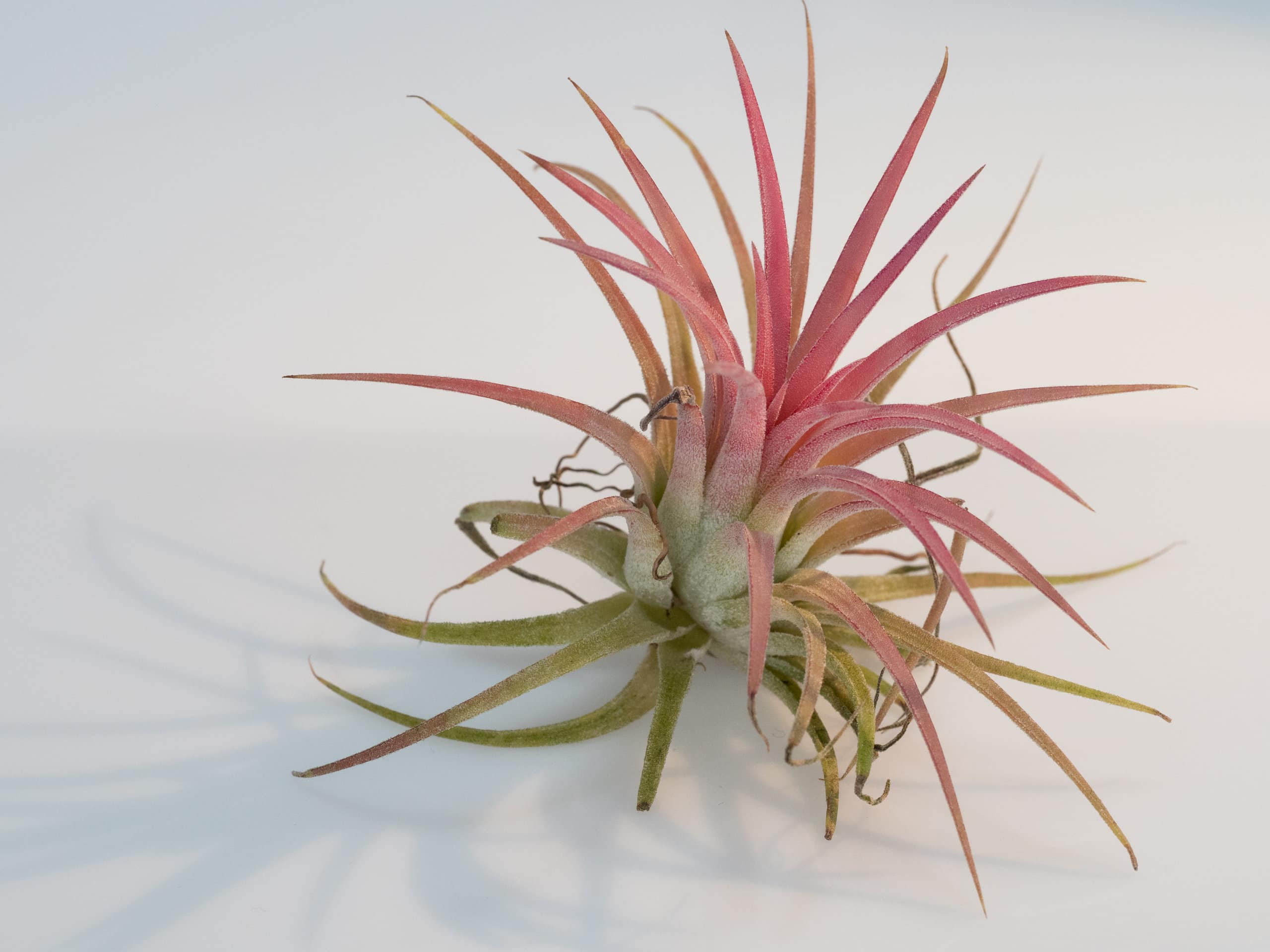
The air plant has a wide-spreading growth but is a smaller variety.
‘Maxima’
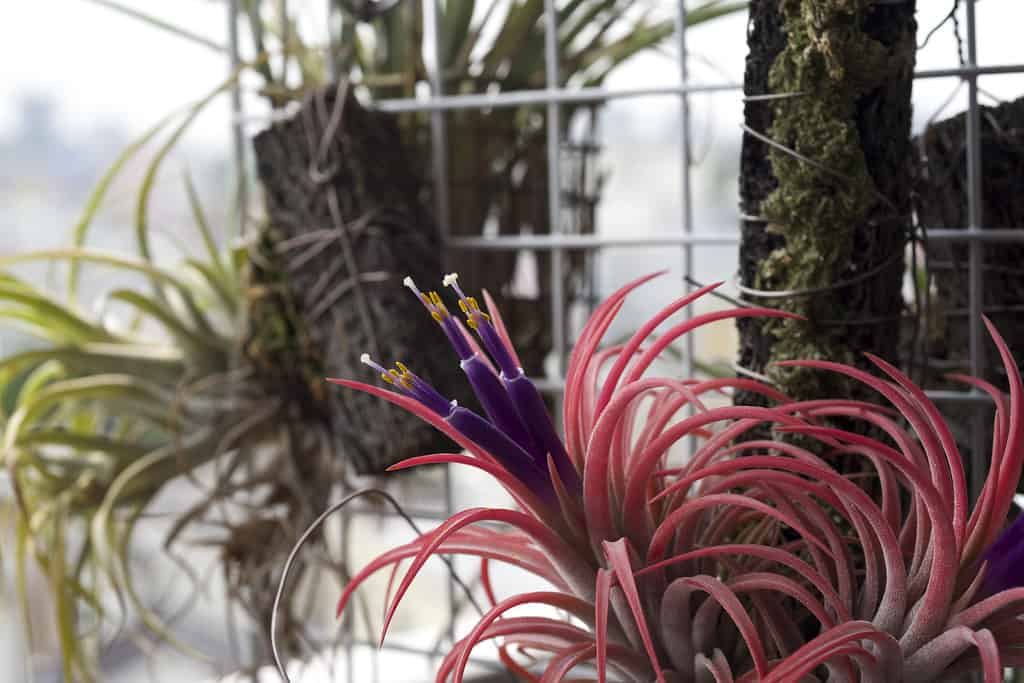
The air plant has a larger size and can handle more direct light.
Ionantha Air Plant Common Pests or Diseases
While the sky plant is easygoing and suffers more from over-watering, it does not mean they do not suffer from common pests. If overwatered, all you need to do is turn your plant upside down and give it a good shake to help remove excess water and leave it to dry.
The same applies if you have scale insects. Wash it and leave it to hang upside down.
Frequently Asked Questions
The only need for the roots of the sky plant is to attach to other plants, and it takes nutrients and moisture out of the air. Hence, it helps to soak your plant in water for up to an hour once a month and leave it to dry well.
Air plants are picky when it comes to watering, and we do not recommend using distilled water as it does not have the nutrients to feed your plant. Instead, we suggest using tap water standing for up 24 hours at room temperature, rainwater, pond water, or aquarium water.
The sky plants’ lifespan is between two to five years as they are perennials and can live longer than two years. But the life expectancy becomes influenced depending on the growing conditions.
You can find the blushing bride air plant at a local nursery or Plantly. So, you can order online and have your sky plant delivered to your front door.
Whether you want to buy, sell or simply reach out to other plant enthusiasts, Plantly is the right place to be!
In stock In stock In stock In stock
Free Shipping
$20.00
Sold By:
Blessed Family Farm
Live Cayenne Pepper Plant
Rated 4.82 out of 5 based on 22 customer ratings03
Sold By:
Blessed Family Farm
$49.99
Sold By:
BubbleBlooms
Succulent Strings Set, Variegated String of Pearls, Turtles, Hearts, and Needles, premium collection, in 2 inch pots, plant gift
Only 99 available and it’s in 2 people’s basket Rated 4.81 out of 5 based on 279 customer ratings01
Sold By:
BubbleBlooms
$18.00
Sold By:
PotHedz Plants
Sansevieria moonshine
Only 1 available and it’s in 3 people’s basket Rated 4.96 out of 5 based on 106 customer ratings00
Sold By:
PotHedz Plants
$6.00
Sold By:
Smoot's Farm
Rainbow Sand Rose or Anacampseros Rufescens Variegata 1″ Pot Live
Rated 4.89 out of 5 based on 27 customer ratings00
Sold By:
Smoot's Farm
